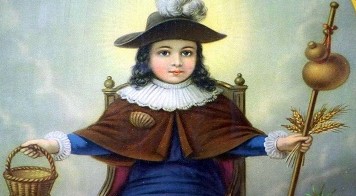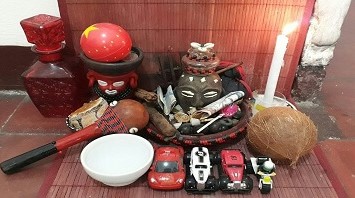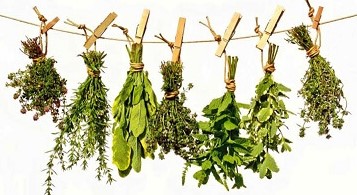All About Elegua: Learn about his day, how to care for him, what you can ask for, types of offerings you give him, and much more.
Elegua is one of the main figures in the Yoruba pantheon, representing the beginning and the end, good and evil. He is one of the most important deities, along with Oggun, Ochosi, and Osun.
In this article, you will learn the most important aspects related to this Orisha, such as how to care for him, how to make offerings, what alternatives to offer him, what phrases to say to him, what foods to eat, and what animals to eat.
Who is Elegua?
As one of the main figures, Elegua is responsible for opening the paths and serving as one of the first protections when someone decides to join the Santeria religion. By uniting with Oggun and Oshosi, he becomes one of the most capable and strongest warriors.
Those uninitiated must receive and venerate him, as he is an entity that will observe the correct paths to follow.
He is an entity with enormous power, as he has traveled to and from the world of Ará Onú. Furthermore, he has 21 pieces, which represent the number of his paths.
In the Catholic Religion

The Yoruba religion has had close contact with the Catholic religion, therefore, many Yoruba deities are also represented in the church. Elegua is recognized in the Catholic religion as the Holy Child of Atocha or Saint Anthony of Padua.
He is known as the owner of all doors, who opens and closes paths. His colors are black and red, controlling the realms of good and evil, creating balance.
In Palo Mayombe
In Palo Mayombe, he can be a benevolent and loving figure, but he can also be an evil figure who should be feared.
He is considered the owner of the Ashe of the universe, that is, of the blessings of the earth. He is the owner of the 21 paths that every Olorisha must know, in addition to the 101 paths known by the babalawos.
What is his day?
Mondays and Wednesdays are the days when we should pay the most attention to this saint. Although he doesn’t have a specific date or day for his devotion, it is recommended to perform prayers, offerings, or rituals on these days of the week.
On the other hand, the main offerings should be made every 21 days, representing Elegua’s path.
Pataki of Elegua
Each Orisha has a specific number of snails that represent them. In the case of Elegua, he is the only deity with 21 snails. These were assigned to the god in a pataki.
Another pataki of Elegua is when the god was walking with his entourage, when he encountered a very bright object emerging from the ground. It was an energy with three eyes.
In addition, the pataki is known to be related to the consecration of Elegua through a coconut. In this case, Elegua encounters a coconut, which has a spiritual connection.
Prayer to this Orisha
There are many prayers to venerate Elegua, but now we will present the main one. But first, you must do the following:
- Go to the altar or prayer space.
- When you are in front of the saint, touch the floor three times, without kneeling.
- Say your name.
- Sprinkle the figure with drops of aguardiente while reciting the prayer.
“Omi tuto
Ona tuto
tuto laroye
Ilé tutorial
Eshu Agogo
Eshu Alaggana Eshu
Moyubao Iyalocha
Moyubao Iyubbona.
Quincamanché.
Cosi iku
sew hoop
cosi araye
to go owo, go oma
go
aye
go otowa
Ashe to iba eshu.”
When you finish, you should mention the problems and situations that are present in your life and that you seek solutions to with the work of Elegua.
How to care for him?

It is important to care for this god to receive his blessing. Furthermore, since he is a saint received by those initiated into Santeria, it is very important for them to know this.
The recommended things to place on his altar are:
- Liquor.
- Tobacco.
- Flowers of your choice.
In addition, you should speak to the saint, giving him the necessary information for him to begin his work. Problems should be expressed clearly and simply, without too many details. This allows Elegua to give you good directions on how to resolve them.
It is important to remember that Elegua will not solve everything, since as a person you also have some power in the solution to what is happening to you.
How to speak to him?
When speaking to him, you must place the offerings we mentioned earlier. You must maintain a cordial and respectful tone with the god, explaining what is happening to you in a confident, simple, clear, and calm manner. This will help the god clearly understand the purpose of your request.
What offerings should be given?

To make the offerings, you must follow a series of steps to ensure they are done properly:
- You can do it on a Monday or Wednesday, before noon.
- Wash the Elegua statue.
- Expose it to the sun for a moment, so that it feels satisfied.
- Now, place three streams of ritual water on the ground and recite the following: “Omí tuto, Ana tuto, Tuto okan, Tuto laroyé, Tutu elei.”
- Begin by making the requests for didara, oriré, and owó. That is, for health, luck, and money, respectively.
- You must say a prayer of thanks, praise, and blessing.
- Now make the offerings, rubbing the Corojo (Epó) with butter.
- Place the honey, toasted corn, and smoked fish.
- Take three peppercorns and blow them with aguardiente and tobacco.
Usually, the offering to this god is made along with prepared food, such as:
- Smoked fish.
- Corn.
- Liquor.
- Cookies.
- Sweets.
- Fruits.
- Cornmeal balls.
- Cooked grains.
These foods can be left on the altar for three days, asking the orisha for help according to the problem you are having. After the three days have passed, you should take the offering to the forest.
How do you know if he is angry?
He is not usually known as a vengeful Orisha, and is usually someone who will protect you if you are respectful and give him enough attention.
If you invoke him to harm others, he may become angry and abandon you, returning all the negativity you requested. He does not like those kinds of requests.
You should approach him with good intentions, along with feelings of faith and respect. This will prevent him from becoming angry, opening positive doors and paths to guide us on the spiritual path and wisdom.
What are Elegua’s children like?
Elegua’s children have a series of particular characteristics that tend to be very similar to those of the saint. The most important are the following:
- Playful.
- Skillful.
- Intelligent.
- Talkative.
- Sweet-eaters.
- Sociable.
- Adaptable.
- Very flexible-minded.
- Eloquent.
- Travelers.
- Extroverted.
- Cheerful.
- Restless.
- Curious.
- Versatile.
- Convincing.
- Persuasive.
- Gentle.
- Warriors par excellence.
- Kind.
- Gallant.
- Inconstant.
- Scattered and distracted.
- Restless.
- Chatty.
- Liars.
- Indiscreet.
- Unfaithful.
- Dual and changeable.
- Nervous and agitated.
Just because you’re a child of Elegua and have these characteristics doesn’t mean someone else can’t have them. Remember, the saint is the one who determines whose child you are. Personality is a set of factors that make you unique.
What are the herbs of this orisha?

It is very important to know which herbs Elegua likes most, as they are important when making offerings and performing rituals. They are also used in the most important ceremonies related to the saint.
Now we will give you a list of herbs and plants of Elegua that are widely used in Santeria and Palo Mayombe. These include the most well-known names of the plant, commonly used in Cuba or other countries, as well as its scientific name.
- Almacigo (Bursera simaruba L.)
- Yellow aroma / Olorosa / Vira mundo (Acacia farnesiana L. Willd or Vachellia farnesiana L)
- Atiponla / Toston (Boerhavia erecta caribaea L.)
- San Pedro vine (Stigmaphyllon emarginatum Cav.)
- White pigweed (Amaranthus viridis L.)
- Caumao (Wallenia laurifolia)
- Pigeon heart (Peperomia pellucidq B.H.K.)
- Croton (Codiaeum variegatum var. pictum)
- Dominator / Belly Scraper (Espadaea amoena A.Rich)
- Larkspur (Jacquinia aculeata Mez in Urb)
- Gambute (Brachiaria platyhylla Grisb.)
- Grama / Fine grass (Cynodon dactylon L.)
- Guava (Psidium guajava L.)
- Guira (Crescentia cujete L.)
- Rooster egg (Taberaemontana amblyocarpa or Taberaemontana citrifolia L.)
- Royal Itamo (Pedilanthus tithymaloides)
- Jobo (Spondias mombin L.)
- Corn (Zea mays L.)
- Mastuerzo / Knows lesson (Lepidium virginicum L.)
- Marjoram (Majorana hortensis Moench)
- Yam (Dioscorea alata L.)
- Mouse’s eye (Rivina humilis L.)
- Palo moro (Psychotria brownei Spreng and Psychotria obovalis A.Rich)
- Black stick (Caesalpinia vesicaria L.)
- Paradise (Melia azedarach L.)
- Hen’s foot (Eleusine indica L.)
- Pica pica (Mucuna pruriens DC.)
- Mouse pineapple (Bromelia pinguin L.)
- Botija pine nut (Jatropha curcas L.)
- Pine nut (Erythrina berteroana Urb.)
- Manzano banana (Musa sp. or Musa paradisiaca L.)
- Curse Remover (Caesalpinia bonduc)
- Cat’s tail (Achyranthes aspera L.)
- Tongue Scraper (Casearia hirsuta Sw.)
- Broom (Neurolaena lobata L.)
- San diego (Gomphrena globosa L.)
- Siguaraya (Trichilia havanensis Jacq.)
- Tobacco (Nicotiana sp.)
- Jutia gut (Teramnus labialis L. Spreng).
Elegua is positioned as one of the most important saints in the entire Yoruba pantheon, which is why it is important that you venerate and respect him properly and as established in the Santera religion. This will help the saint protect you and your loved ones from any problems.
